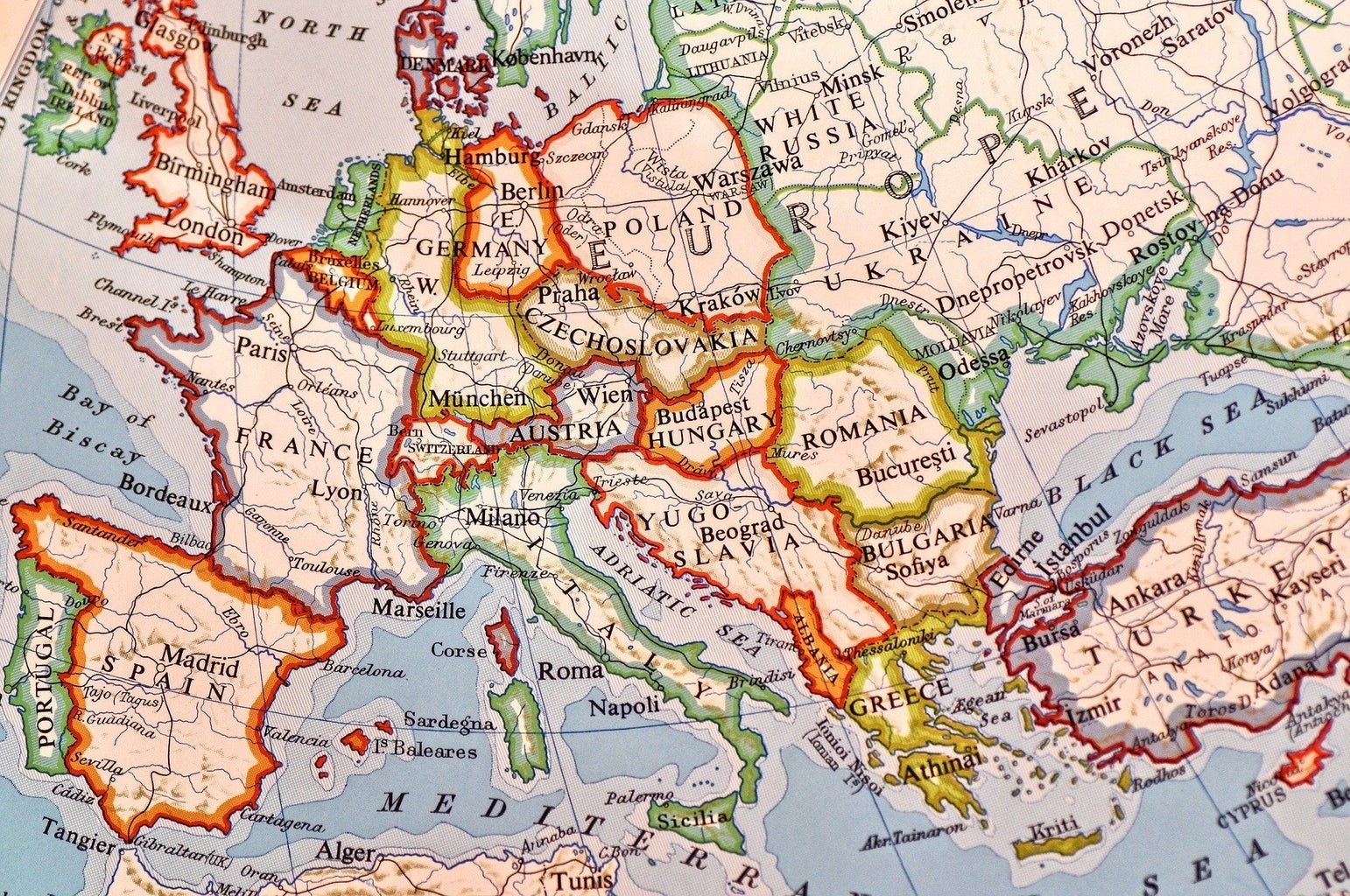Mata Hari refused a blindfold in the morning of her execution. She dressed elegantly and blew a kiss to the firing squad. She was shot 11 times with her head held high. Margaretha was a daring and seductive woman who hypnotized rich men for her own benefit. Many people considered Mata Hari to have been a real femme fatale. But the truth is she was all and nothing of that at the same time.
Mata who?
Mata Hari doesn’t exist – at least not in paper. She was created by Margaretha Geertruida Zelle, born in 7 August 1876 in Leeuwarden, northern Netherlands. From her father, she inherited an adventurous spirit; from her mother, an exotic beauty of Asian origins. Her dark hair, magnetic look and sensual lips called attention in the small Dutch town – her look was unusual for European patterns.
Since a young age, Margaretha had to learn to deal with pain: in a short period of time, her father went bankrupt, her parents got divorced and her mother died, when she was only 15 years old. The girl, who wished to become a kindergarten teacher, went to study in Leiden to improve her family’s life, but ended up being a victim of the headmaster, who began to flirt with her. Even though he came on to her, the moralistic society of that time blamed and shamed her for being with him. For this reason, Mata Hari had to say goodbye to her dream and ran away from home.
This was only the beginning of her tragic romantic attempts. Her first and only marriage wasn’t out of love. She simply answered an advertisement in a newspaper placed by the Dutch Colonial Army Captain Rudolph MacLeod, becoming a newlywed at 19.
The couple went on to live in Dutch East Indies (currently known as Indonesia), where they had two children: Norman-John and Louise Jeanne. It didn’t take long for the young woman to be dazzled by the language, clothes and rhythms of the eastern people. Just for fun, she began to dress and imitate local dances to the military officials.
The first strike
Even though she was mesmerized by the local culture, she was completely unhappy with her relationship. Rudolph was an alcoholic and took his fury out on Mata Hari. He was also unfaithful. Some say Rudolph’s mistress was the nanny of his two children. Blinded by jealousy, it is believed that the nanny poisoned Norman-John, who ended up dead. Others said that Rudolph’s military enemies executed the plan. There are also people who claimed that the son’s death was caused by syphilis, possibly contracted from his parents.
There’s no certainty about what truly happened, however, the tragic episode forced the couple to end their marriage. Margaretha gained the custody of the Louise, her daughter, but Rudolph took her away from his ex-wife. Desolated and flat broke, Mata Hari decided to take over the reins of her own life and live independently in Paris.
The rise of Mata Hari
Margaretha wanted to work as a model, under the name of Lady MacLeod. Despite her efforts, she could not succeed in the fashion industry. The young woman was only able to pose naked and had to appeal to prostitution as well. Disillusioned, she returned to the Netherlands, where she met and became the lover of a very wealthy baron, who gave her financial support to, once again, get back to Paris.
At Belle Époque’s Europe, where Eastern culture aesthetics were vey appreciated, she became the long-time mistress of the millionaire Émile Étienne Guimet. He was the founder of the Musée Guimet, a museum dedicated to the exposition of a huge collection of art, archeology and ethnography from the East. It was there that Margaretha debuted as a dancer on 13 March 1905, when she was 28 years old.
That’s when the legendary Mata Hari is born. The name literally meant “eye of the day” in the Malay language. This new identity also came with new story, which she made up: Mata Hari had been raised in a sacred Indian temple and was taught ancient dancing lessons from a local priestess, who allegedly changed her name. The magic was done.
Mata Hari danced and posed almost entirely naked in front of the public. She became an overnight sensation in Paris’ cabarets and dance clubs. While captivating the audience, she seduced rich men who were there, such as politicians, high command militaries and members of the aristocracy. Her public got more and more select, and even princes came to watch her, like Albert I, Prince of Monaco.
The danger of passion
In the 1910’s decade, Mata Hari was already in decline. She was over 30 years old and younger impersonators appeared. Also, critics said her success was due to “cheap exhibitionism”, since she lacked artistic talent. One of the dancer’s many affairs was the banker Félix Rousseau. Because of him, Margaretha sacrificed Mata Hari. Between 1910 and 1911 she decided to abandon the stages.
The romance with Félix repeated the same pattern of all her relationships: it was ephemeral and didn’t last long. After being left on her own once again, Margaretha tried to resurrect Mata Hari in Berlin. However, the year was 1914 and the striking of the First World War severely restricted her opportunities in Germany.

Mata Hari, the spy
Throughout her life, Margaretha created myths and rumors about herself. It all began when, at the peak of her career, she gave an interview affirming she considered herself to be a Berliner. The newspaper said the German she spoke had little to no accent. With this information, she started to be watched by British and French investigators, who looked for clues to accuse her of spying at Germany’s service.
The Netherlands remained neutral during the war and, therefore, Mata Hari, who was Dutch, didn’t have any issues to travel across Europe. Realizing Berlin was not a good option, she returned to Paris, where she fell in love with a Russian official. Because of a wounded eye, he had to be taken to a hospital far from the French capital. In order to visit her lover, Mata Hari needed a special authorization access to the military zone.
The movement of that free and single woman started to raise even more suspicions to the authorities. The French demanded she worked as a spy if she wanted to keep seeing her love. Desperate, she accepted the proposal, but was very clear: she was only in it for the money. Her duty was to report everything she knew and heard about the rich people whom she spent time with in France.
The second strike
In a short while, she was sent to Spain and strategically stayed at the Ritz Hotel. There, Margaretha got romantically involved with a German official. Unfortunately, she didn’t notice she was actually being manipulated. The “lover” gave her false and obsolete information. Mata Hari also provided trivial news of France to convince him about her passion for Germany. While she was waiting for the return to France to receive the reward for her job, the French decoded the messages. Mata Hari’s name appeared represented by the symbol “H21”.
Towards the end of the War, France saw its imminent defeat and blamed it on Mata Hari, accusing her of treason. In 1917, the once queen of the Parisians nights was arrested in the middle of the Champs-Élysées. Mata Hari was formally accused of betraying French interests, considered a spy and double-agent. An invisible ink was found in her belongings and it was believed that she used it to write messages to the enemies. According to her, the substance was used in her presentations.
What’s behind the trial
Margaretha never admitted to be a spy. Her trial was biased, flawed and rigged. It wasn’t proved Mata Hari revealed any relevant information to French enemies, but neither her nor her lawyer were able to sustain the defense. By adopting so many different names and coming up with stories about herself, she ended up being discredited. Nobody truly knew who Mata Hari was. Therefore, she had no one to testify in her favor.
Mata Hari was found guilty of all charges and was sentenced to death penalty, being shot in the eastern suburbs of Paris, in 15 October 1917, when she was 41 years old. At the occasion, Margaretha wore a neat Amazonian tailored suit and a pair of new white gloves, according to a New Yorker article. But, just as a great part of her life, it is not certain if this was really true.
As an independent and free-spirited woman, Mata Hari dared to go against the provincial moral standards and habits from the first decades of the 20th century. She became a symbol of women’s liberation. But she did it in a time in which that kind of behavior, especially coming from a woman, was immoral. Mata Hari wasn’t found guilty for spying, but for shamelessness.
——————————————————————
The article above was edited by Amanda Moraes.
Liked this type of content? Check Her Campus Casper Libero home page for more!


